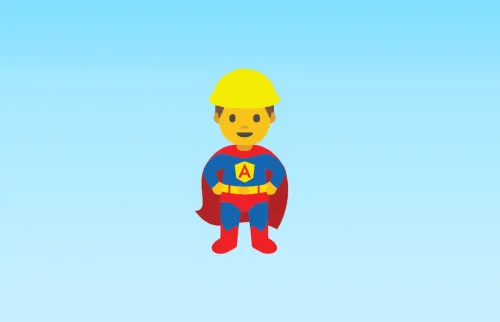Is Pay What You Get Feasible for Custom Software Pricing Models?
Dec 25, 2024
1. Introduction
As the digitalization of businesses approaches, the evolution of custom software pricing models have experienced an increment within the industry. Businesses nowadays seek for a solution driven by the elements of flexibility and innovation in comparison to relatively traditional approaches. Old-school methods include fixed-price contracts as well as outcome-based pricing. Such a shift in the market needs align with why businesses are now focusing their direction in rethinking traditional pricing approaches. One of the reasons why businesses now prioritize modern pricing methods is due to the unpredictable project needs. Occasionally, projects may be faced with a fluctuation in its demands. Hence, the flexibility provided by custom software pricing models allow businesses to adopt a tailor-made software development that meets its operational priorities. Agile methodologies are now seeing a trend in its utilization to which businesses ought to keep up with its pace.
The concept of a ‘Pay What You Get’ is directly poised as an alignment of payment that resonates with the product delivered to the customer. Within the industry of software development services, this concept promotes power to clients by providing them the opportunity to make payments for a particular software based on their perception on the quality of the product. Such perception can be influenced by the quality of the software as well as their initial expectations. This provides a form of incentivization to software developers to innovate a software that aligns with their requests or even take a step further to exceed their expectations. This subsequently allows businesses to form a relationship based on trust with its clients as they will be able to apprehend that the leverage lies with them. Thus, this directly contributes to boosting morale amongst the software developers are they are able to build an incentive-based system to create innovations that are of the highest quality.
2. Understanding Custom Software Pricing Models
Custom software pricing models are defined by the payment made by a customer’s end for the software development services conducted on their requests or needs. There lies several approaches that are widely used for custom software pricing models.
One of the methods is by means of a fixed-price model. This approach sets out a price for the project as a whole in accordance to a predetermined scope. Customers are thus able to predict costs in order to manage their budgets prior to demonstrating full financial commitment. As for a time and material model, this pricing approach is pursuant to the hours and materials devoted towards the software development process. This allows software developers to have a space to adapt those priorities based on their resources devoted into the process of the project’s development.
With regards to value-based models, it is dependent on costs that are attached to the perceived or realistic value of a software delivered to the customer in comparison to it depending on the time and money devoted into the software development. This approach allows customers to instill more trust into the business.
End-to-end project is a comprehensive service designed to bring an entire project to life, covering every stage from initial planning to final deployment. It delivers a fully functional, customized product tailored to specific business needs and objectives. This approach ensures complete end-to-end development, with meticulous management of all aspects of the project to guarantee a smooth process and a flawless result. Leveraging deep industry knowledge and technical expertise, Full Project Build focuses on time and cost efficiency, dedicating resources to deliver high-quality outcomes within set timelines and budgets, through milestone-based payment system aligned with project deliverables, ensuring transparency and scalability based on the project's scope and requirements
The Dedicated Teams model provides a dedicated team that seamlessly integrates into an organization, fostering long-term collaboration and stability. This approach ensures deep alignment with business goals and methodologies, enabling consistent quality and continuous improvement in ongoing projects or continuous support needs. By operating as an extension of the internal team, Retained Teams deliver predictable results with the advantages of fixed monthly costs, simplifying budgeting while driving sustained innovation and excellence.
Client Challenges: By balancing traditional custom software development pricing models to the novel pricing models, the former has its own set of inevitable challenges. Customers tend to experience obstacles with regards to lack of flexibility, potential budget overruns, or even a compromise of quality within the softwares.

3. The 'Pay What You Get' Concept
Definition:
As such, a ‘Pay What You Get’ model introduces the idea to customers that they are able to make payments in accordance to their terms. By means of software development, this concept entails the idea of having an outcome-based payment structure to which clients are able to decide whether the developed software meets their expected level of satisfaction. The assessment includes taking into consideration whether the software is efficient, if it meets its requirements, revenue or even user satisfaction. Not only provides an incentive-based motivation for software developers to innovate a software that meets the satisfaction of customers, it also generates a bridge of collaboration between the development team and clients. This is because clients are able provide input as to their expectations of the software and give their constructive feedback during the development process. This segments the concept of a ‘Pay What You Get’ model compared to traditional pricing approaches as the element of agility gives the competitive edge in terms of pricing advantages within the evolving market trends.
Expectation vs. Reality:
As mentioned, clients are able to regularly provide their constructive feedback during the development progress of a particular software. The reality is that this concept provides a common platform for shared understanding between the client and the software development teams. This is because this concept requires a collaborative commitment from both parties in order to create a software based on their mutual expectations. The expectations can be in the manner of improvements on an existing software, or even new features that meets the needs of a business. Such shared comprehension of goals and objectives allow the development process to be conducted even more efficiently.

4. Advantages of the 'Pay What You Get' Model
Flexibility and Transparency:
Not only does this concept provide the element of flexibility, it also offers transparency. The advantage of transparency is demonstrated through open communication between the client and the software development teams. This is because there is a clarified outline of the goals and objectives to be achieved by the software to which the client and development team are to collaborate in order to meet the expectations. Both parties are able to agree on what quantifiable outcome amounts to success. Through consistency of regular feedback, clients are able to have access to the approaches used by the teams. This provides a sense of security of the quality control of the software as well as comprehension as to how the resources are allocated during the process. .
5. Challenges of the 'Pay What You Get' Model
Despite the advantages of a ‘Pay What You Get’ Model, it comes along with its disadvantages within the business industry as well. One of the significant negatives of this concept is its ambiguity. This pricing model may potentially have an unspecified definition of ‘value’ to which the subjectivity may cause disparity between the clients and the software development teams. This can take form especially during the beginning stages of a software development project whereby there could be difficulty in establishing the measurable metrics to define the success of the project. Misalignment between the parties may stir major obstacles during the development process as it could take a toll on the timeline and flow of the project as a whole. Furthermore, there may be fluctuations with regards to the pricing during instances whereby unforeseeable events arise. This could potentially complicate the pricing as initially expected to the extent that the client’s budget would have to be adjusted accordingly

6. Feasibility for External Software Development Partners
Client-Partner Relationship
In a ‘Pay What You Get’ model, trust, and clear transparent communication are critical. External software development partners must be honest and open with their clients. This helps build a solid foundation for collaboration and confidence with one another, guaranteeing that both sides will work towards the mutually agreed deliverables.
Project Scope and KPIs
Clear project scope and precise Key Point Indicators (KPI) are crucial to the success of a collaboration. KPI’s are able to provide clear checkpoints for measuring progress of the project. This leads to regular feedback for both parties, allowing both parties to track results, outcomes, and make adjustments as needed, in order to align the project development with the client's expectations.
Role of Technology and Reporting
Management tools such as cloud-based applications such as Jira or Trello allow for real time reporting, and enhancing transparency which is crucial for the PWYG model. These tools offer visibility into project progress, and resource usage, facilitating proactive communication and agile solutions to issues, ensuring the PWYG model is more manageable and reliable for both parties of a collaboration.
Conclusion
In custom software development, the 'Pay What You Get' (PWYG) model offers several advantages, such as flexibility, client empowerment, and a focus on outcomes rather than effort alone. Through focusing on outcomes that meet or exceed client expectations, PWYG enables a stronger relationship between client and developer, and promotes continuous collaboration. However, it also presents challenges, such as defining value and the need for consistent, transparent communication between clients and developers in order to keep aligned with goals and KPI. This model works best when there is a strong foundation of trust, clear KPIs, and consistent reporting practices.
Call to Action
If you’re exploring custom software pricing models and want a solution tailored to your needs, reach out to Intertec. Our team can guide you through the options to find the pricing approach that aligns best with your project’s goals. Let’s create software solutions that meet—and exceed—your expectations.


Stefan Gligorov
Book a free consultation
Customers who trust us
Book a free consultation
You may also like

Towards Perfect ES Query Generation with Elastic-builder
Apr 09, 2020
Velimir Graorkoski

Elastic Builder To The Rescue
Apr 22, 2020
Velimir Graorkoski

Understanding the Most Effective Practices of Remote Working
May 19, 2020
Tanja Zlatanovska